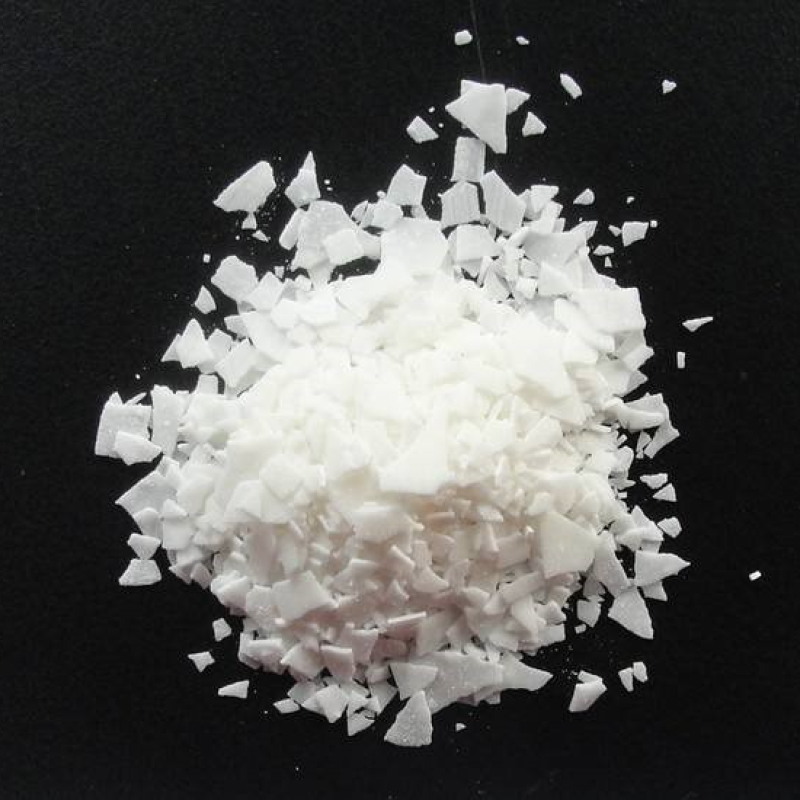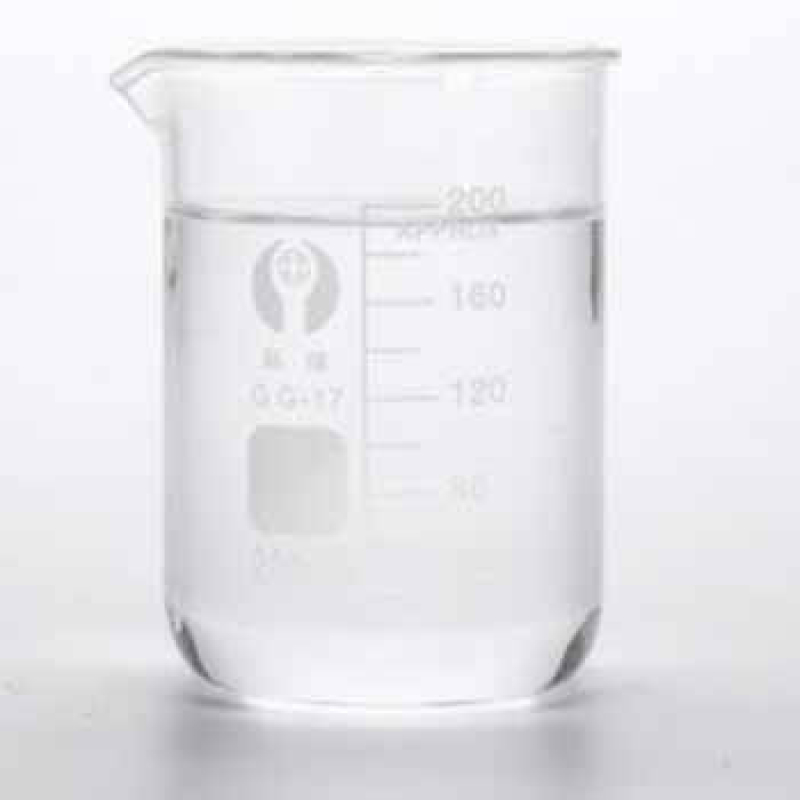Products Description of HYDROXYLAMINE CAS#7803-49-8Hydroxylamine is also called "hydroxylamine". Chemical formula NH2OH. Molecular weight 33.03. Unstable white large flake or needle-shaped crystals. Very easy to absorb moisture, volatile, very soluble in water. Deliquesce in the air. Odorless, corrosive to the skin. When the concentration is 100%, 10%, 20%, 30%, 40%, 50%, the relative density of the aqueous solution is: 1.2040, 1.0192, 1.0410, 1.0637, 1.0875, 1.1122. The product decomposes in hot water and is slightly soluble in ether, benzene, carbon disulfide, and chloroform.
Contact Now
Products Description of Tetrabutylammonium hydroxide CAS#2052-49-5Tetrabutylammonium hydroxide is an organic compound with the chemical formula C16H37NO.
Contact Now
Products Description of Tetrabutylammonium hydroxide CAS#2052-49-5Tetrabutylammonium hydroxide is an organic compound with the chemical formula C16H37NO.
Contact Now
Products Description of Methyltriphenylphosphonium bromide CAS# 1779-49-3Methyltriphenylphosphonium bromide is a solid quaternary phosphonium salt flame retardant. At present, halogen-containing flame retardants are widely used organic flame retardants with excellent flame retardant properties. However, when a fire occurs, halogen-containing flame retardants will release a large amount of smoke and toxic hydrogen halide gas, causing secondary hazards.
Contact Now
Products Description of CREMOPHOR (R) A25 CAS#68439-49-6CETETH25 is a nonionic emulsifier obtained by adding natural saturated fatty alcohol and ethylene oxide. CETETH25 (HLB15-17) is an oil-in-water (O/W) emulsifier. When used together with CETETH6, it forms a pair of complementary emulsifiers. The emulsifier pair has a small amount of use and a strong emulsification ability. The prepared emulsion products have high stability and bright appearance. It can tolerate a certain degree of inorganic salts and extreme pH conditions.
Contact Now
Products Description of Isoquinoline-3-carboxylic acid CAS#6624-49-3Isoquinoline-3-carboxylic acid is a derivative, crystalline solid.Isoquinoline-3-carboxylic acid Chemical PropertiesMelting point 166-167°CBoiling point 366.4±17.0 °C(Predicted)density 1.339±0.06 g/cm3(Predicted)storage temp. 2-8°Csolubility DMF: 20 mg/ml; DMF:PBS(pH 7.2)(1:1): 0.5 mg/ml; DMSO: 20 mg/ml; Ethanol: 5 mg/mlform A crystalline solidpka1.20±0.30(Predicted)CAS DataBase Reference6624-49-3(CAS DataBase Reference)Safety InformationHazard Codes XiRisk Statements 36/37/38-36Saf
Contact Now
Products Description of 2-Dimethylaminoisopropyl chloride hydrochloride CAS#4584-49-0Hydrochloride salt of 2-Dimethylaminoisopropyl Chloride, used in the synthesis of analogues of lipophilic chalcones, which act as antitubercular agents.2-Dimethylaminoisopropyl chloride hydrochloride Chemical PropertiesMelting point 187-190 °C(lit.)storage temp. Store below +30°C.solubility 2000g/lform Crystalline Powdercolor White to light creamPH5-6 (500g/l, H2O, 20℃)Water Solubility 2000 g/L (20 º C)Sensitive HygroscopicBRN 3670215InChIInChI=1S/C5H12ClN.ClH/
Contact Now
Products Description of 4-(4-Aminobenzyl)piperazine-1-carboxylic acid tert-butyl ester CAS#304897-49-24-(4-Aminobenzyl)piperazine-1-carboxylic acid tert-butyl ester is a carboxylic acid ester derivative and can be used as a pharmaceutical intermediate.4-(4-Aminobenzyl)piperazine-1-carboxylic acid tert-butyl ester Chemical PropertiesBoiling point 413.6±40.0 °C(Predicted)density 1.136±0.06 g/cm3(Predicted)storage temp. under inert gas (nitrogen or Argon) at 2–8 °Cpka7.16±0.10(Predicted)Safety InformationHS Code 2933599590Product Application of 4-(4-Aminobenzyl
Contact Now
Products Description of Diazolidinyl UreaCAS#78491-02-8Properties: White powder, hygroscopic, odorless or with characteristic odor.Diazolidinyl Urea Chemical PropertiesBoiling point 421.04°C (rough estimate)density 1.4734 (rough estimate)vapor pressure 0Pa at 20℃refractive index 1.6590 (estimate)storage temp. 2-8°Csolubility Water (Slightly)form Solidpka11.22±0.46(Predicted)color White to Off-WhiteWater Solubility 1000g/L at 20℃Merck 14,3000Stability:Stable.
Contact Now
Products Description of Silica gelCAS#112926-00-8Silicone gel is a type of low cross-link density silicone rubber without fillers. Silicone gel is different from ordinary silicone rubber elastomers. It has a transparent or translucent gel appearance, very low mechanical strength, and its hardness is difficult to measure. Its physical strength is generally characterized by needle penetration.
Contact Now
Products Description of 3-Methoxythiophene CAS#17573-92-13-Methoxythiophene is an important intermediate in organic synthesis.3-Methoxythiophene Chemical PropertiesMelting point 49-50 °C(Solv: ethyl ether (60-29-7); ligroine (8032-32-4))Boiling point 80-82 °C/65 mmHg (lit.)density 1.143 g/mL at 25 °C (lit.)refractive index n20/D 1.532(lit.)Fp 121 °Fstorage temp. Keep in dark place,Inert atmosphere,2-8°Cform Liquidcolor Clear light brownSensitive Air SensitiveBRN 106404LogP1.810 (est)CAS DataBase Reference17573-92-1(CAS DataB
Contact Now
Products Description of Thiabendazole CAS#148-79-8Thiabendazole is commonly known as Tekodo, Tibilin, Thiobendazole, Thiabendazole, and Thiabendazole. It has the ability to conduct systemically to the top, but not to the base. It has a long lasting effect and has cross-resistance with benzimidazole fungicides. It has inhibitory activity against ascomycetes, basidiomycetes, and deuteromycetes, and is used to prevent and control fungal diseases of various crops and preserve fruits and vegetables.
Contact Now
Products Description of Glutaraldehyde CAS#111-30-8Glutaraldehyde is an important saturated straight-chain fatty dialdehyde. Although there are many reports on the toxicity of glutaraldehyde, the cross-linking of glutaraldehyde has many advantages and has been accepted in clinical applications.
Contact Now
Products Description of Terephthalaldehyde CAS#623-27-8Terephthalaldehyde is an important fine chemical raw material downstream of paraxylene. Because it has two active aldehyde groups in its molecular structure, it can self-polymerize or copolymerize with other monomers to form polymer materials, which are mainly used to synthesize fluorescent materials. Materials, catalyst carriers and other high molecular polymer products.
Contact Now
Products Description of 2,3-Difluorophenol CAS#6418-38-82,3-Difluorophenol is a chemical substance.2,3-Difluorophenol Chemical PropertiesMelting point 39-42 °C (lit.)Boiling point 54 °C/25 mmHg (lit.)density 1.2483 (estimate)Fp 134 °Fstorage temp. Inert atmosphere,2-8°Cpka7.71±0.10(Predicted)form powder to lump to clear liquidcolor White or Colorless to Almost white or Almost colorlessBRN 2082265InChIKeyRPEPGIOVXBBUMJ-UHFFFAOYSA-NCAS DataBase Reference6418-38-8(CAS DataBase Reference)Safety InformationHazard Codes F,Xn,Xi,CRisk Statements&
Contact Now
Products Description of Diphenyl Ether CAS#101-84-8Diphenyl Ether (CAS#101-84-8) is a colorless crystalline solid or liquid with a mild, pleasant aroma. It is characterized by its colorless appearance and melts at a point around 81 °F (27.2 °C). When the temperature exceeds this melting point, it transforms into a colorless liquid. Diphenyl Ether is known for its distinct, strong floral-green, metallic geranium-like scent and is insoluble in water.This chemical is widely used as a heat transfer medium due to its thermal stability and low vapor pressure.
Contact Now
Products Description of L-GLUCOSE CAS#921-60-8L-glucose is the enantiomer of D-glucose, a naturally occurring carbohydrate used in numerous cellular processes.L-GLUCOSE Chemical PropertiesMelting point 153-156 °C(lit.)Boiling point 232.96°C (rough estimate)density 1.2805 (rough estimate)refractive index -52 ° (C=5, H2O)storage temp. 2-8°Csolubility H2O: 0.1 g/mL, clear, colorlessform aqueous ethanol solutionpka12.45±0.20(Predicted)color WhiteWater Solubility Soluble in water, alcohol.Merck 14,4459BRN 1724626Stability:Stable.
Contact Now
Butylated Hydroxytoluene CAS#128-37-0Aluminium Sulfate (CAS#16828-11-8), also known as Alum, is a white crystalline compound widely recognized for its effectiveness in water purification and its versatility in various industrial applications.
Contact Now
Products Description of 3-Hydroxyphenylphosphinyl-propanoic acidCAS#14657-64-8Used in organic synthesis, manufacture of pesticides and pharmaceutical intermediates3-Hydroxyphenylphosphinyl-propanoic acid Chemical PropertiesMelting point 158.0 to 162.0 °CBoiling point 526.6±42.0 °C(Predicted)density 1.35±0.1 g/cm3(Predicted)vapor pressure 0Pa at 20℃storage temp. 2-8°Csolubility soluble in Methanolform powder to crystalpka2.21±0.50(Predicted)color White to Almost whiteWater Solubility 31.183g/L at 20℃LogP-4.2 at 20℃CAS DataBase Reference14657-64-
Contact Now
Triethylmethylammonium chloride Chemical PropertiesMelting point 282-284 °C (lit.)storage temp. Inert atmosphere,Room TemperatureWater Solubility Soluble in waterform Powdercolor White to Almost whiteBRN 3912434CAS DataBase Reference10052-47-8(CAS DataBase Reference)EPA Substance Registry SystemEthanaminium, N,N-diethyl-N-methyl-, chloride (10052-47-8)Safety InformationHazard Codes XiRisk Statements 36/37/38Safety Statements 26-36WGK Germany 3TSCA YesHS Code 29239000Factory and Equipment ShowFast delivery timeInventory 2-3 working day
Contact Now
Products Description of PRL-8-53 CAS#51352-87-5White crystal powderPRL-8-53 Chemical Propertiesstorage temp. under inert gas (nitrogen or Argon) at 2-8°Csolubility DMF: 30 mg/ml DMSO: 30 mg/ml Ethanol: 30 mg/ml PBS (pH 7.2): 10 mg/mlform A crystalline solidInChIInChI=1S/C18H21NO2.ClH/c1-19(14-16-7-4-3-5-8-16)12-11-15-9-6-10-17(13-15)18(20)21-2;/h3-10,13H,11-12,14H2,1-2H3;1HInChIKeyHLBBSWSJLPLPRU-UHFFFAOYSA-NSMILESC(OC)(=O)C1=CC=CC(CCN(CC2=CC=CC=C2)C)=C1.[H]ClFactory and Equipment ShowFast delivery timeInventory 2-3 working days New production 7-10 working days
Contact Now
Products Description of OP 935 CAS#225789-38-8 As a new type of phosphorus-based flame retardant, diethylaluminum hypophosphite has high thermal stability, chemical stability and environmental friendliness, and can be used as an excellent polymer material flame retardant to replace environmentally harmful halogen flame retardants.OP 935 Chemical PropertieWater Solubility 1.6g/L at 25℃CAS DataBase Reference225789-38-8Product Application of OP 935 CAS#225789-38-8 The main chemical bonds in the structure of diethyl aluminum hypophosphite are P-C, P=O, P-O, and its flame r
Contact Now
Products Description of Triethylamine CAS#121-44-8 Triethylamine (molecular formula: C6H15N), also known as N,N-diethylethylamine, is the simplest homotrisubstituted tertiary amine. It has the typical properties of tertiary amines, including salt formation and oxidation. Triethylamine has no reaction in the Hisberg reaction. It is a colorless to light yellow transparent liquid with a strong ammonia odor and a slight smoke in the air. Boiling point: 89.5℃, relative density (water = 1): 0.70, relative density (air = 1): 3.48, slightly soluble in water, soluble in ethanol and ether.
Contact Now
Sodium carbonate CAS#497-19-8Overview:Sodium Carbonate, with the chemical formula Na2CO3 and CAS number 497-19-8, is a widely recognized chemical compound known for its diverse applications across various industries.
Contact Now


































